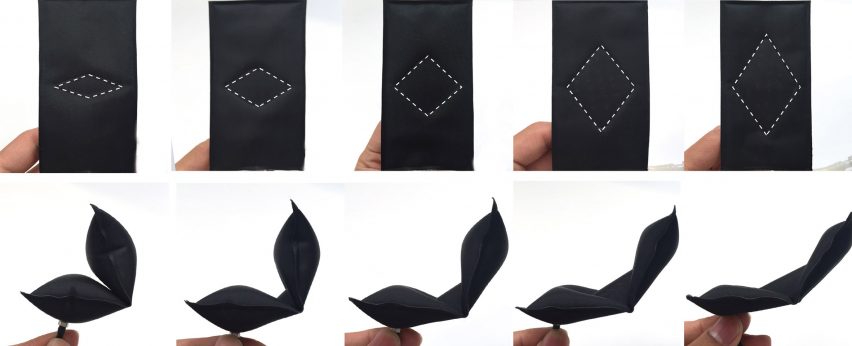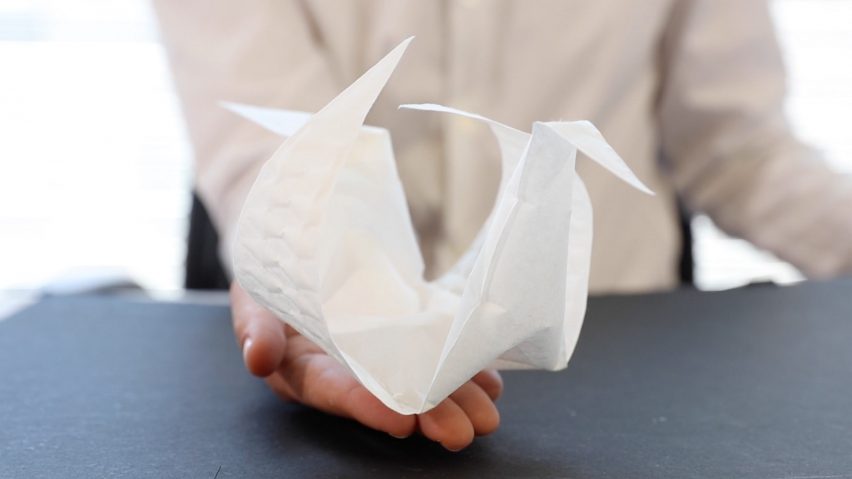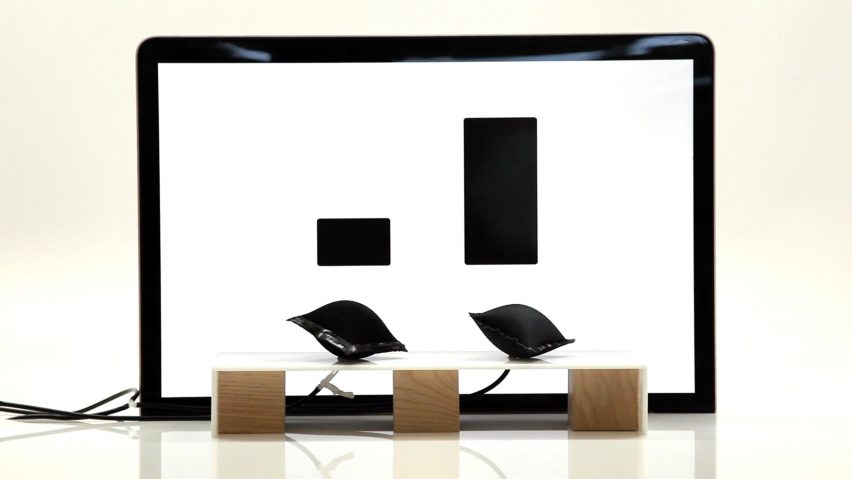Aeromorph inflatables fold themselves from flat sheets into complex origami
Basic sheets of plastic, paper or fabric can now be transformed into complex inflatables using a method devised by researchers at MIT Media Lab's Tangible Media Group.
While a typical pouch made out of these materials would blow up into a spherical shape like a balloon, the group's Aeromorphs inflate into different shapes, determined by the pattern of seams that is pressed into them.
The Tangible Media Group researchers devised a software tool to generate these patterns, which correspond to different three-dimensional shapes. A custom heat-sealing head mounted on a standard three-axis CNC machine then transfers the patterns onto plastic, paper or fabric.

Video of the project shows Aeromorph inflatables unfurling from flat into shapes such as an origami-like crane and a cube, while scaling up the technology could create inflatable architecture in the manner of Bureau A's black PVC nightclub or BIG's cloud-like Roskilde festival pavilion.
Aeromorphs have the potential to greatly simplify how inflatable structures are manufactured.
"The biggest advance we see in this project is the precise control of folding – direction and angle – with common materials that designer can find, like paper, fabric or plastic," Jifei Ou from the Tangible Media Group told Dezeen.
"It does not require a complicated moulding and casting process to create inflatables, and therefore can be easily tried out."

The Aeromorph software uses a combination of three geometries to control how a material bends: the line, arc and diamond. Altering the aspect ratio of the diamond, for example, alters how acutely the inflated structure bends around it.
The user can run as many simulations as they require on the software, testing subtle alterations to the geometries. Once they settle on a final design, they export the final 2D-layout in DXF format, which can be used with most CNC machines.
The heat-sealing process can also be done manually or with a robotic sealing system.
Ou carried out the research alongside fellow MIT researchers Mélina Skouras, Chin-Yi Cheng, Nikolaos Vlavianos, Felix Heibeck, Jannik Peters and Hiroshi Ishii.

In addition to inflatable installations and pavilions, the group sees the technology being useful in packaging design, where air pillows commonly protect objects during shipping.
"This give us the possibility to fabricate a self-folding cushion that automatically folds to perfectly wrap the shipping item," said Ou.
Another application might be in wearable technology and garment design. As an example, the Tangible Media Group proposed a cycling glove that inflates and deflates to indicate the direction a user should take.
In 2015, the group presented the BioLogic shirt, which peels back to create an air vent in response to sweat. Aeromorphs could be incorporated into similarly transformable garments.
The Aeromorph researchers are currently working with a manufacturer to investigate large-scale applications of the technology.